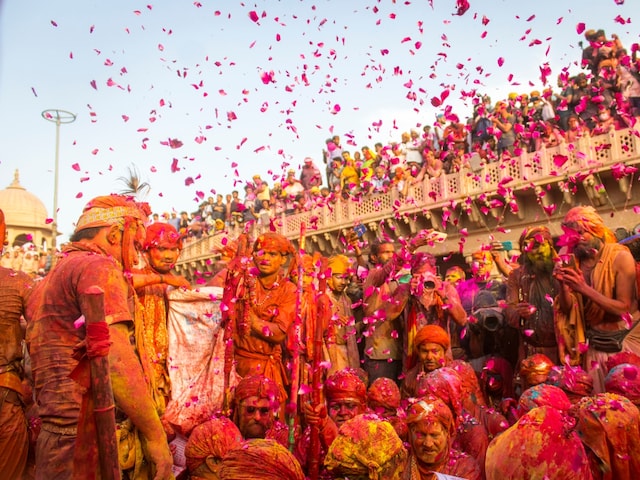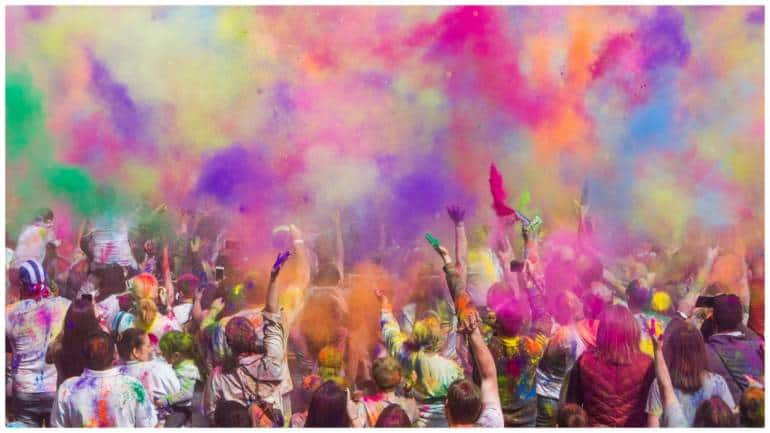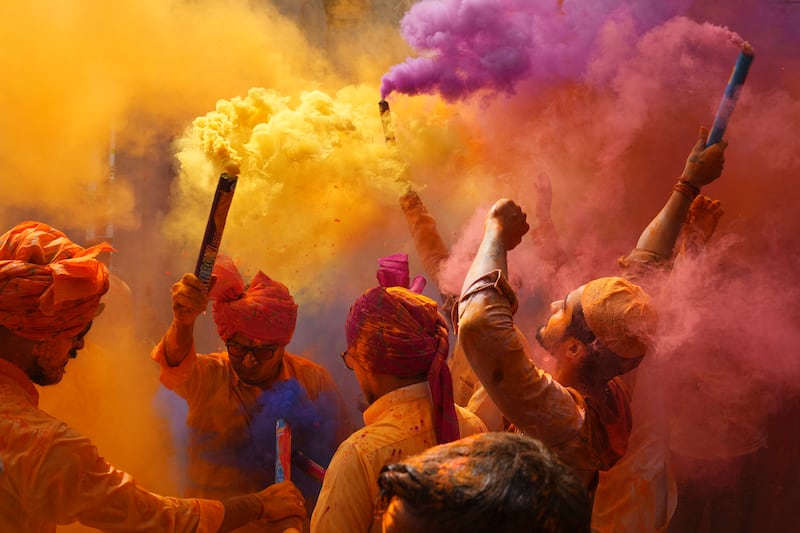Holi, widely recognized as the Festival of Colors, is celebrated with great fervour and joy across various regions, most notably in India. This Hindu festival, also referred to as 'Dol Jatra' or 'Basanta Utsav' in regions like West Bengal, Assam, and Tripura, traditionally marks the end of winter and heralds the arrival of spring. Aligned with the Gregorian calendar, it usually takes place in late February or early March, coinciding with the full moon of the Hindu month of Phalguna. It's a time when individuals come together, setting aside any differences, to celebrate the more joyous aspects of life. As anticipation builds for Holi in 2024, the question arises: will it be celebrated on March 24 or March 25? This article delves into the correct date for this exuberant Hindu festival, alongside the time-honoured customs and its significance in India.
Holi 2024: Celebrate the Festival of Colours
Holi • 22 Mar, 2024 • 3,959 Views • ⭐ 4.8
Written by Shivani Chourasia

Understanding the Festival of Colors

Holi is a vibrant Hindu spring festival observed in India and Nepal, falling on Phalguna's full-moon day (February–March). It's a day when participants joyfully smear each other with coloured powders and drench one another with coloured waters, breaking free from the usual constraints of societal norms such as caste, gender, status, and age. The celebrations in the streets are characterized by boisterous music, the exclamation "Holi hai" (meaning "It's Holi!"), and uninhibited behaviour, allowing for a temporary suspension of societal divisions through a colourful display.
The Significance of Color and Celebration

Participants "play" Holi, engaging in festivities that often feature loud music and shouts of "Holi hai," alongside playful and sometimes risqué behaviour. This blurring of societal lines through the use of vibrant colours leads to a collective transcendence of overt differences. However, the festival concludes on a harmonious note as everyone cleans up, changes into fresh attire, and visits friends, teachers, and family, thus reestablishing and rejuvenating social order. Holi's appeal has crossed borders over time, with celebrations among South Asian communities in the United States, the United Kingdom, the Caribbean, and other countries hosting significant Indian diasporas. Despite being a time to dissolve differences and unite with loved ones and the community, the festival's boundary-less nature can lead to incidents of harassment and altercations, necessitating increased security measures by law enforcement in various regions across India.
The Colors of Holi: Tradition and Modernity

The festival's colours, used in the form of powder (gulal) or coloured water, play a central role in the celebrations. Traditionally, these colours were sourced from nature: green from neem and henna leaves; yellow from turmeric and marigold flowers; blue from indigo plants; and red from pomegranates, the flame of the forest (Butea monosperma), and red sandalwood. However, modern celebrations often see the use of synthetically produced powders, which are inexpensive and available in a variety of vibrant shades. Due to concerns over synthetic colours containing toxic, metal-based pigments or harmful dyes that may cause skin and eye irritation, there's a growing preference for herbal colours among celebrants.
The essence of Holi is also captured in community gatherings, music, and food. Traditional sweets like gujiya (a deep-fried pastry filled with coconut and dried fruits), jalebi (a spiral-shaped dessert soaked in syrup), and malpua (Indian pancakes), along with savoury street foods such as chaat and kachori, enhance the festive spirit. Beverages like lassi, thandai (a sweetened milk drink with nuts and spices), and bhang (a cannabis-infused beverage) are commonly enjoyed, contributing to the overall exhilaration of Holi revellers.
Holi 2024: Date and Timing Details

In accordance with the Hindu lunar calendar, the exuberant festival of Holi is celebrated on the Purnima (full moon day) of the Falgun month every year. The forthcoming Holi festival is scheduled for Monday, March 25, 2024, with the preceding day, known as Holika Dahan or Choti Holi, being celebrated on Sunday, March 24. Drik Panchang provides the following propitious timings:
Purnima Tithi commences at 09:54 AM on March 24, 2024
Purnima Tithi concludes at 12:29 PM on March 25, 2024
The Origins of Holi
